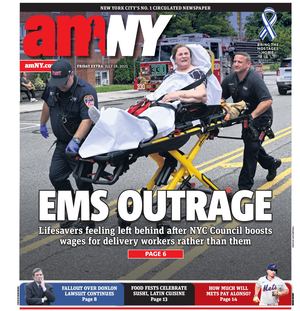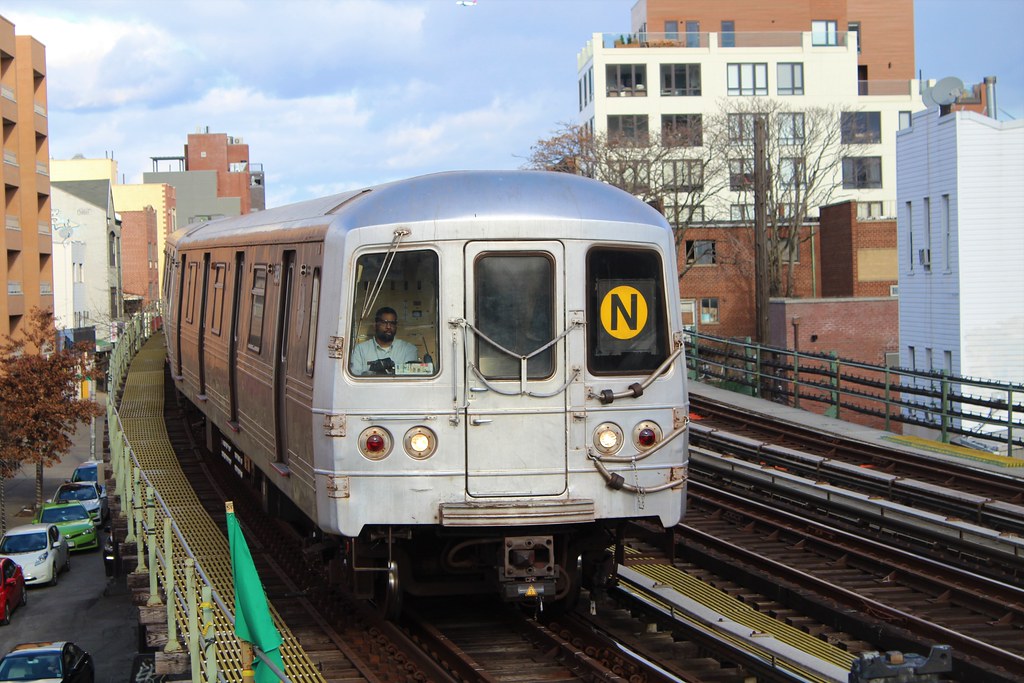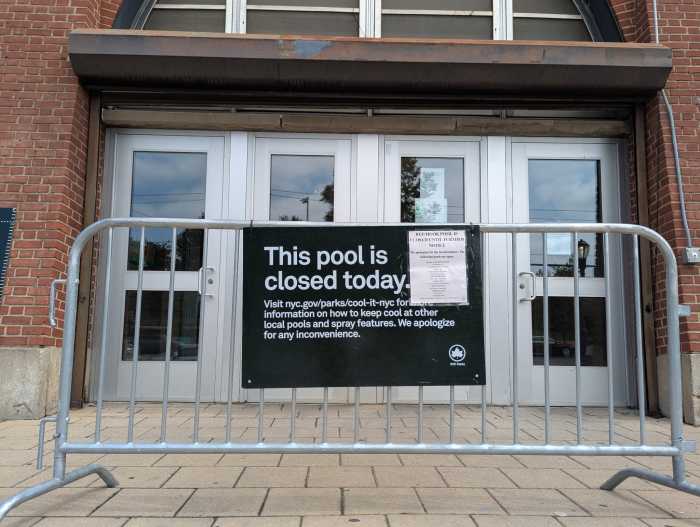Downtown roots
To The Editor: What a fascinating report about the colonial journal of a seaman who lived Downtown (news article, Nov. 24 – 30, “Downtown journal from nearly two centuries ago”).
The article notes that the seaman, Christopher Prince, in 1821, worked as superintendent of the “Hospital,” in Greenwich Village. Well, the hospital, New York Hospital was located in Tribeca, on the west side of Broadway, between what is now Duane and Worth Sts., a few blocks north of City Hall Park.
I know, because I not only live nearby, but after doing genealogical research, I found that one of my ancestors, Thomas Smellie, a Scottish merchant, arrived at New York Hospital for health treatment in 1801. He came from his plantation, Dublin Castle, in Jamaica in the Caribbean. His ancestor, a merchant and noble, John Smellie, arrived in the British Colonies in 1715, and had a child, George, with Ann Roberts, “a Free Negroe” in 1726. My African-American grandmother was his descendant, Rebecca Smellie.
In 1801, New York Hospital was the only private hospital in the city.
Bellevue was an infirmary, public hospital and almshouse. The librarian at New York Presbyterian Hospital/Cornell Medical Center, the modern version of Tribeca’s New York Hospital, has records from the colonial era.
Pearl Duncan Pearl Duncan is the author of an upcoming book about tracing ancestors, “DNA, Courage & Ordinary Folks.” What would Jane do?
To The Editor: The plan to reconstruct Warren and West Sts. (“Residents fight dangerous change to highway crossing,” news article, Nov. 17 – 23) to make it more auto-friendly by making it more dangerous for pedestrians is both appalling and anti-city. The title of Chapter 22 of Jane Jacobs’ landmark book, “Death and Life of Great American Cities,” sums up the argument nicely, “Erosion of cities or attrition of automobiles[?]” For those interested, in her last book, “Dark Age Ahead,” Jacobs also exposes the so-called science of traffic engineering for what it has really become in a chapter entitled, “Science Abandoned.” (“In what traffic engineers have chosen to do and have recommended, they have abandoned and betrayed science as it is understood.”)
Benjamin Hemric
To The Editor:
Re “Southbridge risks” and “Have report, will argue at Southbridge” (Letter by Geraldine Lipschutz and Larry Vide, news article, Nov. 24 – 30):
The reconstitution of Southbridge Towers is a non-eviction plan. Geraldine Lipschutz has long believed that she will be at the mercy of those who will leave her homeless. I understand why she believes this. I have attended and taken shorthand notes at meetings of the “Concerned Cooperators Committee” and have heard a board member, Victor Papa, tell the shareholders that they “will lose their precious homes” if Southbridge Towers goes private. Nothing is farther from the truth, and using these scare tactics in a community that has a large number of senior citizens is, at the very least, shameful and irresponsible. Seniors at Southbridge should know that the State of New York will not allow them to be evicted. Unfortunately, Southbridge is not an informed community. Half of the shareholders haven’t picked up the feasibility study.
Shareholders and board members have not read the Mitchell-Lama legislation, even though it is easily found on the internet. Instead, shareholders depend upon the opinions of those whose letters frequently appear on your editorial page. The original 1955 legislation, written by former Manhattan Sen. MacNeil Mitchell, and former Brooklyn Assemblyman Alfred Lama, allowed for withdrawal from the Mitchell-Lama program after 20 years, if the mortgage was paid. Southbridge paid its mortgage with the state two years ago. More importantly, the original authors stipulated that apartments need not be kept affordable for moderate-income families – the apartments can be sold at the prevailing market rate. Nowhere in the legislation is there any reference to remaining in the Mitchell-Lama program so people from the Midwest can afford to come and live in New York City – a position that is held by the Concerned Cooperators Committee. Reconstitution of Southbridge Towers offers an option for those shareholders who do not want to own their apartments at the market rate – they can opt out, which means they will receive their equity and continue living in their apartment as a renter. Reconstitution offers Southbridge shareholders a once-in-a-lifetime opportunity that is not based on greed. In closing, I say to our board president, John Fratta – yes, according to the Mitchell-Lama legislation, we are entitled to a windfall. Margaret Cooney
To The Editor:
In response to the letter from my fellow shareholders Geraldine Lipschutz and Larry Vide, I question why they would feel unsafe or uncomfortable living at Southbridge Towers should the shareholders elect to leave the Mitchell-Lama program, as the original legislation 40 years ago specifically envisioned. The recent feasibility report they refer to, produced by Stuart Saft, a highly respected New York cooperative and condominium expert, indicates the greater threat to us, in terms of unmanageable maintenance increases, lies in not leaving Mitchell-Lama, under which we are unable to utilize our property’s equity to keep maintenance affordable and cover expenses via a flip tax, a common financial tool in cooperatives. The shareholders of Southbridge Towers own, virtually outright, a billion-dollar property in a booming neighborhood. The loss of our tax abatement would be fully offset by a flip tax of 20 percent with even less than the historical four percent apartment turnover rate, according to the report. This has been the experience in comparable middle-income cooperatives which have privatized. And if any shareholders feel excessive anxiety at the prospect of genuinely owning their own homes in a free market (sociologically and economically long accepted as a positive circumstance) for fear of maintenance increases — although maintenance has in fact risen 30 percent since 2002, with equally high increases predicted to follow indefinitely under the status quo — well, just opt out, be a renter under a Rent Stabilization equivalent, and relax. I, for one, will not miss the government’s unnecessary and burdensome supervision. Jesse Mandel To The Editor:
The “Southbridge risks” letter written by fellow Southbridge residents only goes to prove how some people are set in their ways even if a change is for the betterment of all Southbridge residents. The residents write that the monthly maintenance costs will rise after the buyout and could be devastating for the elderly occupants. They also go on to say that “with longevity on the rise there come ailments that soon use up resources meant for that time in our lives when they are most needed.” The anti-privatization writers unwittingly gave the best argument for privatization. If we went private, the elderly could get a reverse mortgage and live in Southbridge virtually rent-free for the rest of their lives. With longevity on the rise and the ailments that go with it eating up resources, a reverse mortgage is a blessing for the elderly.
Michael Wishner
To The Editor:
Re “How I was duped by Ali G.” (Essay, Oct. 13 – 19):
Wow. It’s obvious what motivates Borat/Cohen. He attempted to make a funny movie and it was hilarious. I am certain that he isn’t trying to get back at some woman who beat him in Scrabble. If anything he makes fun of sexism. Borat is ignorance incarnate, and that is what makes him so funny — because he is able to bring out the ignorance of America. I don’t think that Linda Stein was made to look stupid. What made it funny was that she thought she might be having a serious interview with a seriously ignorant person. The person who should be the most worried is the ignorant rodeo manager. He is the epitome of stupid Americans.
Linda Stein makes herself look really bad by retaliating with stupid attacks on Borat/Cohen. He wasn’t trying to ridicule women but rather it had the opposite effect. Borat exposes the ridiculousness of sexism. I am a lesbian feminist and I thought the movie was wonderful at exposing the ignorance of Americans — not the ignorance of Linda Stein, but of stupid patriarchal bull. No one in their right mind would agree with Borat’s viewpoints on women and he is hardly promoting such ignorance with his movie. I think that Linda Stein should be grateful that she didn’t say anything stupid or ignorant. She just did the appropriate thing by appearing angry and appalled. The only problem is that now she is overreacting and making herself look stupid with her character assassination of Borat/Cohen.The fraternity brothers were exposed for the woman haters that they are — the movie makes fun of racists, sexist pigs, and homophobes. How could anyone believe that the movie is promoting ignorance? Patricia Allen
To The Editor:
Michael Burke calls Anthony Gardner’s idea of preservation Gardner’s alone and bonkers, and says the families are oblivious to what Mr. Gardner is trying to achieve (Letters, Nov. 24 – 30, “W.T.C. bedrock”). I have aligned myself with Anthony Gardner, and no, there is no personal connection. A W.T.C. memorial that doesn’t preserve as much as possible, will lose much of what happened on the day when thousands of lives were taken. The most poignant memorials that truly move people are the ones that have been kept intact, or built to replicate the condition that existed. For instance the Jewish memorial in Washington displays the horrible inhumane condition in which the people at the concentration camps were in. And who will deny the intensity of the preservation of the real concentration camps preserved throughout Europe like Auschwitz? We must ensure this memorial tries to convey 9/11 for all that it was. For the millions who step foot on that spot, preservation is a must. Barry Zelman
Brother of Kenneth Zelman, killed Sept. 11, 2001 on the 99th floor of the North Tower.
Downtown Express welcomes letters to The Editor. They must include the writer’s first and last name, a phone number for confirmation purposes only, and any affiliation that relates directly to the letter’s subject matter. Letters should be less than 300 words. Downtown Express reserves the right to edit letters for space, clarity, civility or libel reasons. Letters should be e-mailed to news@DowntownExpress.com or can be mailed to 145 Sixth Ave., N.Y., N.Y. 10013.Southbridge study
Feminist sides with Borat
W.T.C. preservation
Letters policy
































